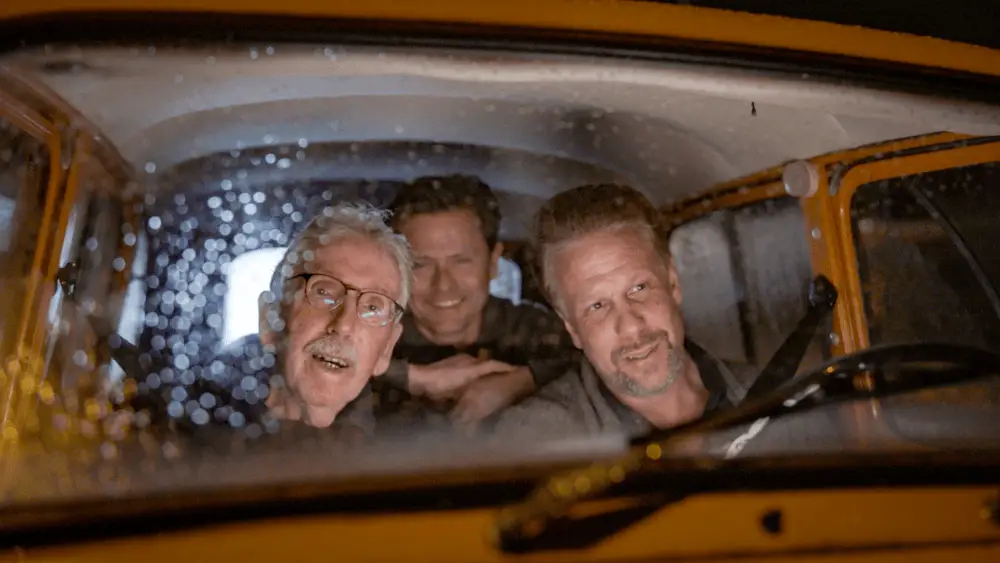A deeply relatable, humorous and heartbreaking road movie, The Last Journey is director Philip Hammer’s tender portrayal of the love he has for his ailing 80-year-old father, Lars. Hoping to reignite the old man’s zest for life, Philippe and his best friend and co-director Fredrik Wikingson drive him to a French coastal town where they once vacationed, but ultimately It was a negative Philip who came to visit. Facing the humiliation of aging and the inevitability of time. On another level, the film is also a tribute to teachers and an affirmation of how inspiring and memorable great teachers can be.
With more than 400,000 people in Sweden to date, this life-affirming documentary has broken box office records and is still playing in theaters after 32 weeks. It has the potential to be a dark horse candidate for Sweden’s international feature film.
This is Hammer and Wickingson’s first feature. Although they both started their careers as journalists, they are now well-known in their native Sweden for their decades-long collaboration as unconventional television personalities, podcast hosts, and authors. They bring some of their trademark spontaneity and chaos to the mix for “The Last Journey,” which is also blended with home movies and tape recordings made by the Hammer family.
In 2008, when Lars, still in good health, retired as a high school French teacher in his hometown of Köping at the age of 66, he expected productive work.three years old” But by 2022, he was suffering from mysterious pains that could barely get him out of his comfortable armchair. His strong and active wife Tina confesses to Philip that he seems to have lost his spark.
Philippe falls into the mistaken belief that if he takes Lars back to his beloved France, he will somehow restore Lars to his previous health and state of mind. After tracking down the orange Renault 4 that was once the family car, he packs up his reluctant father. With Vikingson in the back seat, they set off for Beaulieu-sur-Mer.
Naturally, the long journey doesn’t go as planned, and with a top speed of 40mph, the Renault becomes the most overtaken car in Europe. But along the way, the cinematography shines through, capturing the autumn beauty of local vegetation, roads, bridges, and skies. Meanwhile, Philip and Frédéric, who have previously hosted an unusual TV travel show, are dealing with uncertainty with a free attitude.
One of the most fascinating aspects of the film, which Lars mentions, is the fact that Philip remembers far more family vacation traditions than Lars does. However, Philippe sometimes tries too hard to stage them, such as when his father and the elderly French guests are listing who their acquaintances are sick and who have died. There is an awkward scene where he tries to get his father to do something by interfering. He tells old stories about Harry Belafonte with the flair he remembers.
Even if Lars will never again be the lively, energetic father that Philip idealized, he still seems to be a wise and practical soul. He is a humble man with a great sense of humor, and a sincere love for France and some of its craziest foibles shines through.
Some of the funniest moments occur when Philip and Fredrik try to recreate situations that Lars once encountered and enjoyed. Typical scenes are staged with the actors, given the French traffic customs that appealed to him. However, it is not so easy to find an enraged parrot that dips its beak into a beer glass.
The most moving scene comes near the end, when there is a final surprise, with Philip and Fredrik taking to the stage along the shore where Lars’ ashes were to be scattered after his death. If viewers don’t shed tears, they’re sure to call their parents.
The upbeat score by Christian Olsson and the incorporation of French songs by Ra’s favorites Jacques Brel and Georges Brassens fit the material perfectly and are a pleasant listen. The rest of the production credits are fine, including a cheerful title highlighting the main character and an animated map showing the itinerary.
